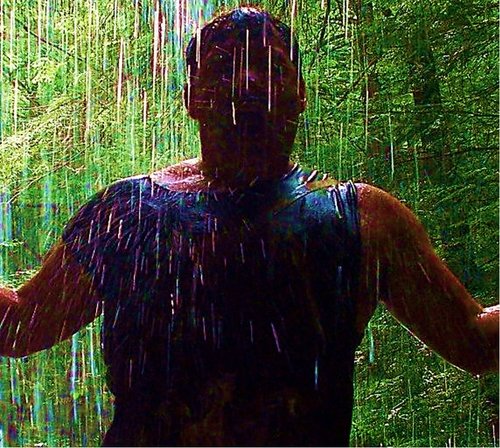MOVIE REVIEWS
 Review by John Chard
Review by John Chard
Some things a man has to do, so he does 'em. This is a story of the Winchester Rifle Model 1873 "The Gun That Won The West" - To cowman, outlaw, peace officer or soldier, the Winchester 73 was a treasured possession. An Indian would sell his soul to own one... Winchester '73 is the first collaboration between director Anthony Mann and actor James Stewart, a duo that would go on to create a run of superior Westerns that added a new psychological depth to the genre. The story sees Stewart as Lin McAdam, who is pursuing the man who killed his father. Riding into Dodge City with his trusty friend, Johnny Williams (Millard Mitchell), Lin runs into Dutch Henry Brown (Stephen McNally), the man he wants. But with Wyatt Earp (Will Geer) having taken all the guns from those entering the town, both men are unable to have the shoot-out that they are ready for. The men instead square up in a competition to win a Winchester 73 rifle, a competition that Lin eventually wins. But before he can leave town with the magnificent prize, Dutch ambushes him, steals the rifle and skips town fast. As Lin sets off in hate filled pursuit of both man and rifle, the rifle will changed hands a number of times, with each time adding another dimension as the day of reckoning for all approaches. Very much a benchmark for what became known as the so-called "psychological Western", Winchester '73 is basically a story of a decent man driven to borderline insanity by an event in his past. Though shot in black and white (the only one of the duos Westerns that was) the landscapes are still breath taking feasts for the eyes. The tone is set with the opening scene as Lin and Johnny on horseback, and in silhouette, amble over a hillside as they make their way to Dodge City. It's just the starting point that would see Mann use his vistas as a way of running concurrent with his characters emotional states. Stewart gives one of his finest and most intense performances as McAdam, proving once and for all that he was one of America's finest and most versatile actors. The support cast isn't too bad either. Shelley Winters is excellent as the sole female in amongst the machismo, while Mitchell, McNally, Geer and the always great Dan Duryea add further class to proceedings. There's even bit parts for Tony Curtis and Rock Hudson in here, though the latter playing an Indian brave is a stretch too far. Originally the film was a project for Fritz Lang, who even had the script ready to run. But Lang walked away from it, something that proved to be a blessing for Western fans. For as great as a director that Lang was, with Mann directing (and with a new script from Borden Chase & Robert Richards in hands) it set the wheels in motion to alter the course of the genre. Not only with the further efforts that Mann & Stewart produced, but also in who they influenced. The likes of Budd Boetticher, Nicholas Ray and Sam Fuller were all taking notes, and gleefully for the Western purists, they followed suit and carried the psychological torch still further. A big hit at the box office back on release, Winchester '73 is a magnificent film that still packs a punch in the modern age. 9/10
 Review by Wuchak
Review by Wuchak
_**Dynamic James Stewart Western with a noir tinge**_ The prize rifle of a drifter (James Stewart) is stolen by his nemesis (Stephen McNally), apprehended by a gun-trader (John McIntire), involved in a cavalry vs. Indian clash, winds up in the hands of a man who struggles with cowardice (Charles Drake) before being swiped by a charismatic outlaw (Dan Duryea). Meanwhile Lin McAdam (Stewart) pursues it with his faithful pardner (Millard Mitchell). While "Winchester ‘73" (1950) was shot in flat B&W, it’s a compelling action-packed Western with noir touches highlighted by the notable cast, which also includes Will Geer and Shelly Winters (when she was young, fit and voluptuous, not to mention spunky). Also look for Rock Hudson as the lead brave Young Bull and Tony Curtis as a besieged cavalry trooper. The movie throws in Dodge City, Kansas, and a surprisingly congenial, almost bumbling (and too-old) Wyatt Earp (Geer) even though it’s clear that the film was shot in southern Arizona. For instance, the saguaro cactus is native to the Sonoran Desert and not within 800 miles of Dodge City. But Tascosa, Texas, works okay within the framework of the Southwest, I guess. Basically, you have to ignore some misleading geography and a dubious Wyatt Earp to enjoy the picture. The film runs 1 hour, 32 minutes, and was shot mainly in southern Arizona with studio stuff done at Universal Studios, California, with some exterior shots of Zion National Park, Utah. GRADE: B